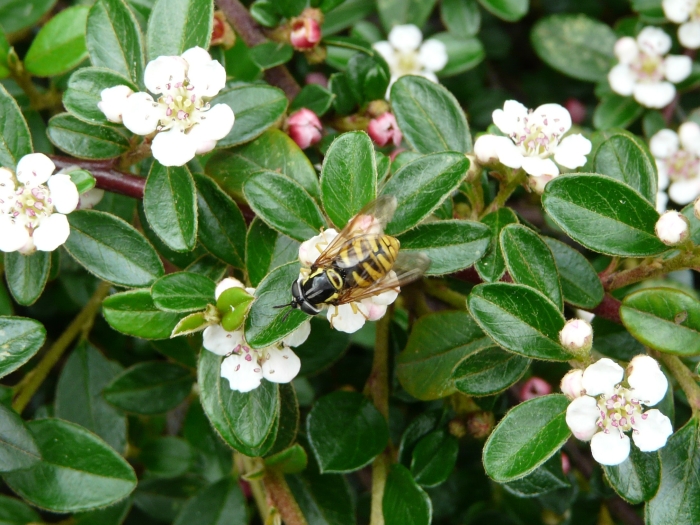Bearberry Cotoneaster
(Cotoneaster dammeri)
Bearberry Cotoneaster (Cotoneaster dammeri)
/
/

Père Igor
CC BY-SA 3.0











































































Estimated Native Range
Summary
Bearberry Cotoneaster is valued for its low-maintenance nature, evergreen foliage, and ability to stabilize slopes and banks, making it a popular choice for ground cover and erosion control. It thrives in full sun to part shade and prefers well-drained soils but can tolerate a range of soil conditions. While it requires medium amounts of water, it is relatively drought-tolerant once established. However, gardeners should be cautious as Cotoneaster dammeri can be invasive outside its native range, and its shallow, spreading roots can interfere with other plantings.CC BY-SA 4.0
Plant Description
- Plant Type: Subshrub
- Height: 0.8-1 feet
- Width: 4-6 feet
- Growth Rate: Moderate
- Flower Color: N/A
- Flowering Season: Spring, Summer
- Leaf Retention: Evergreen
Growth Requirements
- Sun: Full Sun, Part Shade
- Water: Medium
- Drainage: Medium
Common Uses
Bank Stabilization, Bee Garden, Bird Garden, Border Plant, Butterfly Garden, Deer Resistant, Drought Tolerant, Erosion Control, Fire Resistant, Groundcover, Hedges, Hummingbird Garden, Low Maintenance, Potted Plant, Rabbit Resistant, Rock Garden, Street Planting
Natural Habitat
Mountainous regions, rocky slopes, and scrubby areas in China, including Xizang
Other Names
Common Names: Bearberry Cotoneaster, Teppich-Zwergmispel, Cotonéaster De Dammer, Cotonéastre De Dammer, Krypoxbär, 矮生栒子, Kriech-Zwergmispel, Ai Sheng Xun Zi
Scientific Names: , Cotoneaster dammeri, Cotoneaster humifusus, Cotoneaster dammeri var. dammeri, Cotoneaster humifusa, Cotoneaster dammeri subsp. songmingensis, Cotoneaster dammeri subsp. typicus, Cotoneaster dammeri var. songmingensis, Cotoneaster dammeri var. typicus, Pyrus dammeri,
GBIF Accepted Name: Cotoneaster dammeri C.K.Schneid.